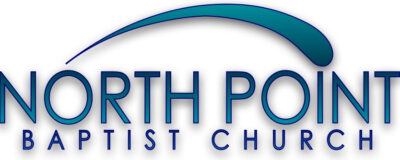October 16, 2020
The Feasts
Pentecost
Leviticus 23
The seven Old Testament feasts were divided into two sections. The first four commenced the series and had reference to events connected with the first coming of Christ. If these, three direct our attention to the work of the Savior. The fourth, the Feast of Pentecost, directs our attention to the work of the Spirit.
The word Pentecost comes to us from the Greek. It is the Greek word for fifty. Because it was fifty days from the Feast of Firstfruits to Pentecost, the feast is sometimes called “the Feast of Weeks.” There were seven full weeks to which was added another day. Thus the Feast of Firstfruits and the Feast of Pentecost were celebrated on the first day of the week. These Old Testament feasts anticipated the end of the Jewish Sabbath and a new emphasis on the first day of the week as a day of rest and rejoicing.
“When the day of Pentecost was fully come,” says Luke in recording the momentous events in the upper room (Acts 2:1). The feast had come and gone for some fifteen hundred years; now it had fully come. As all the typology connected with it was fulfilled, the Old Testament shadows gave way to the New Testament substance. The Holy Spirit came in a new and living way. Judaism was replaced by the church. The annual ritual, with its burnt offerings, with its sin offering and peace offering, and with its two loaves, was swept aside. A new day had dawned.
On the Day of Pentecost a hundred twenty individual believers in Christ assembled in the upper room, a room full of memories for the disciples. The church was born in that room with the sound of a mighty, rushing wind and amid a blaze of cloven tongues of fire. In that room the Holy Spirit baptized a hundred twenty separate believers into one body, “one loaf” As the wind drives away the chaff, so that mighty,rushing Pentecostal wind swept away the past that was centered in a now dead Judaism. The cloven tongues of fire symbolized the new cleansing and irresistible power now inherent in the church, the mystical body of Christ. The loaf represents the one body, in contrast to the multiple grains of corn on the wave sheaf. Over a hundred individual believers went into the upper room. One body, one church, came out.
The Old Testament ritual, however, actually called for two loaves, not just one. That was because Pentecost took place in two stages. Only Jews were present in the upper room on the Day of Penteco in Acts 2. Later on, in the house of the Roman centurton Cornelius, Gentiles were added to the church. The same apostle was the chosen agent of the Holy Spirit on both occasions. The same phenomenon of tongues was present both times—the first time to convince the mass of unbelieving Jews in Jerusalem, the second time to convince the skeptical Jewish members of the church. There were two loaves—but there was only “one bread, and one body” (1 Cor. 10:17). Gentiles did not have to become Jews in order to become Christians. Jews and Gentiles were impartially baptized by the Spirit into the same mystical body of Christ. The middle wall of partition between Jews and Gentiles was swept away (Eph, 2:13-I6; 4+:4—6). Before long, Gentiles would become a permanent and overwhelming majority in the church. Note that there was leaven in the two loaves. This was because the loaves represent the church, which has never been wholly free from sin.
The process begun at Pentecost goes on, for the Holy Spirit continues to add new members to the mystical body of Christ. Thankfully it will continue till Christ comes again.
100 Devotions for Leaders – 2008 by John Phillips – Published by Regal Publications Grand Rapids, Michigan
Pastor Lee’s Thoughts: I am so thankful for the church and I am thankful that the Lord saw fit to create the church as the body of Christ that is continuing to be an ever present hope in a hopeless world. Today we need the church more than ever before. Let us not forsake the church but rather lets run to the church and engage and enhance our relationship with the Body of Christ!
